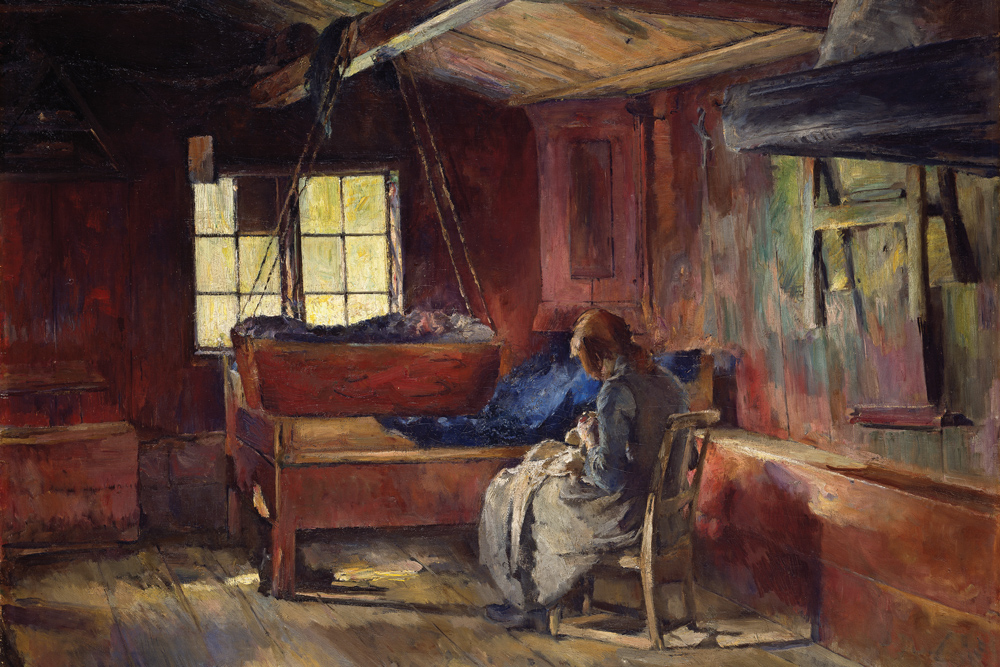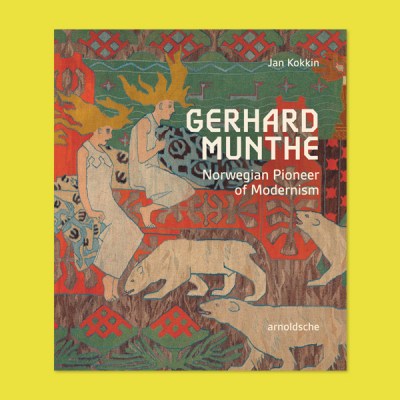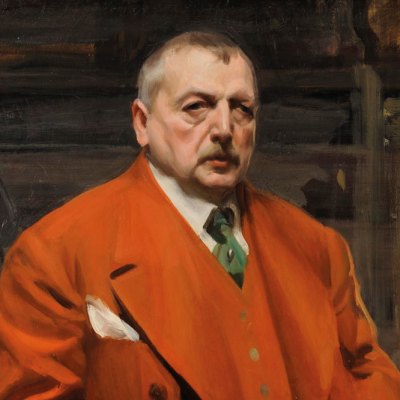From the January 2024 issue of Apollo. Preview and subscribe here.
One of many good reasons to visit this exhibition at the Nasjonalmuseet in Oslo – or when it tours to Stockholm, Bergen or Paris – is the fact that it restores attention to a cosmopolitan creative sphere, led by women, that has often been neglected. From the 1880s until her death in 1932, through both her success as a painter and the art school she ran in Oslo, Backer helped to define the direction of painting in Norway. Having trained in Munich and Paris for 15 years, and exhibited in the Expositions Universelles of 1889 and 1900, she brought home to Norway an international sensibility and a determination to support women artists. Her students included many artists whose work can be seen elsewhere in the collection of the Norwegian national museum, among them Nikolai Astrup, Halfdan Egedius, Harald Sohlberg, Helga Ring Reusch and Astri Welhaven.
‘Harriet Backer: Every Atom is Colour’ places Backer at the centre of the Norwegian art scene at the turn of the 20th century: historical and reputational rescue work of a very particular kind. Though Backer is not well-known outside of Norway, at home she is still considered – in the words of the exhibition’s curator, Vibeke Waallann Hansen – ‘one of the leading Norwegian artists of her generation irrespective of gender’. The exhibition is not so much an act of rediscovery, but a bid to put Backer on a world stage.
The exhibition is divided chronologically and thematically across seven rooms. In the first rooms, the formal, realist style Backer honed in Munich at the start of her career gives way to more naturalistic scenes focused on domestic interiors. Part of the appeal Backer holds for a Norwegian audience arises from her sensitive treatment of local subjects. One of the most beautiful and long-laboured-over pictures, Interior from Uvdal Stave Church (1909), is a case in point. Depicting a peculiarly Nordic style of wooden church with a gorgeously delineated painted interior, Backer divides the frame with a central pillar. On the right, she places a group of churchgoers in modern attire. Their attention focuses on an elderly woman in traditional garb who sits on the left in a pool of light, reading. There are only a few remaining examples of churches like this one in Norway (in Sweden, they were modernised out of existence). Backer’s painting, with its compositional balancing of present and past, has a preservative function.
Interior from Uvdal Stave Church (1909), Harriet Backer. Photo: Kode/Dag Fosse
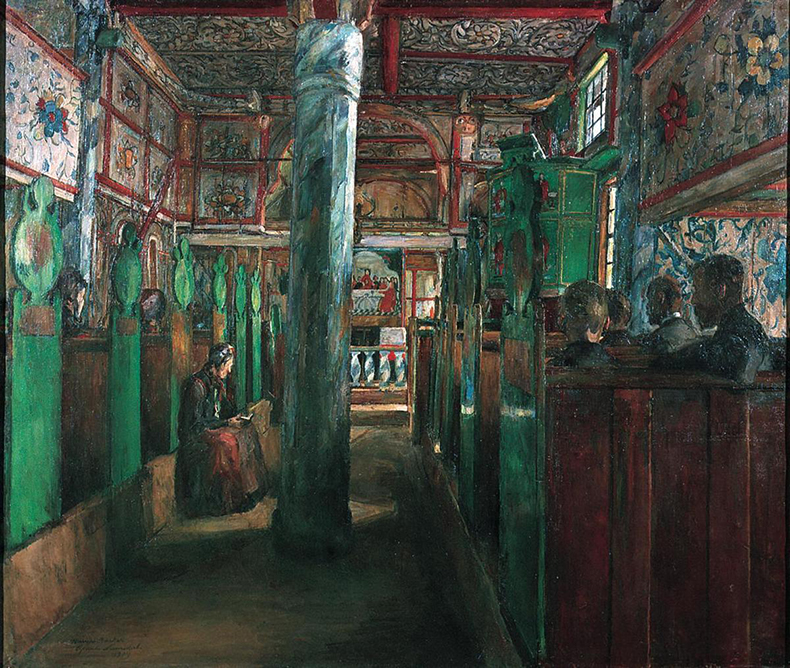
There are many pictures of medieval churches in the exhibition, and they seem to be motivated by a documentary instinct that is almost architectural – as in Interior from Tanum Church (Sketch) (1891) with its bare walls. In Backer’s careful rendering of the interiors of both peasants’ cottages and modern apartments, the emphasis is likewise often on the spaces themselves. Figures flit in and out of, and are arguably incidental to, rooms replicated obsessively across paintings such as Card Players (1897), By the Hanging Cradle (1898) and Interior, Stralsjohaugen (1900), which hang here side by side. In the summer of 1881, Backer vowed to complete her interior paintings in situ; as these spaces reappear again and again, the viewer gets a sense both of their specificity and of time passing within them. This is what life is like, and this is where it takes place, Backer tells us.
By the Hanging Cradle (1898), Harriet Backer. Norske Selskab, Oslo
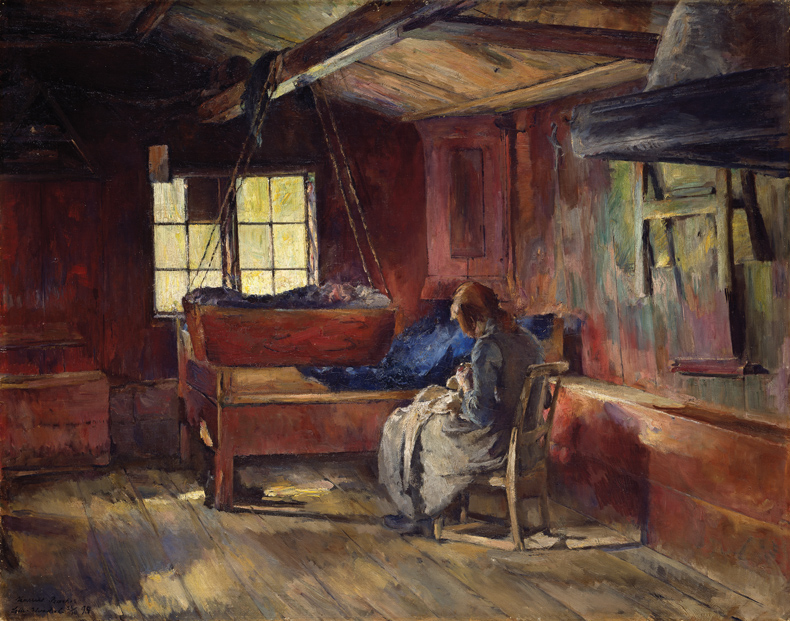
However, the figures that return in painting after painting have the opposite effect. In By the Hanging Cradle, a woman sits sewing. Similar female figures, turned away from the viewer or in partial profile, lit from the side by a window or at times a lamp, reappear in Woman Sewing (1890) and in Farmhouse Interior, Skotta, Baerum (1887). Their occupations changed, the same sitters are shown in At the Piano (1894), Music, Interior from Kristiania (1890), Music, Interior from Paris (1887), Lavender (1914), Chez moi (1887) and so on. These Vermeeresque figures recur throughout Backer’s career, across differing social and class contexts and with varying nationalities.
At the Piano (1894), Harriet Backer. Photo: Nasjonalmuseet/Børre Høstland
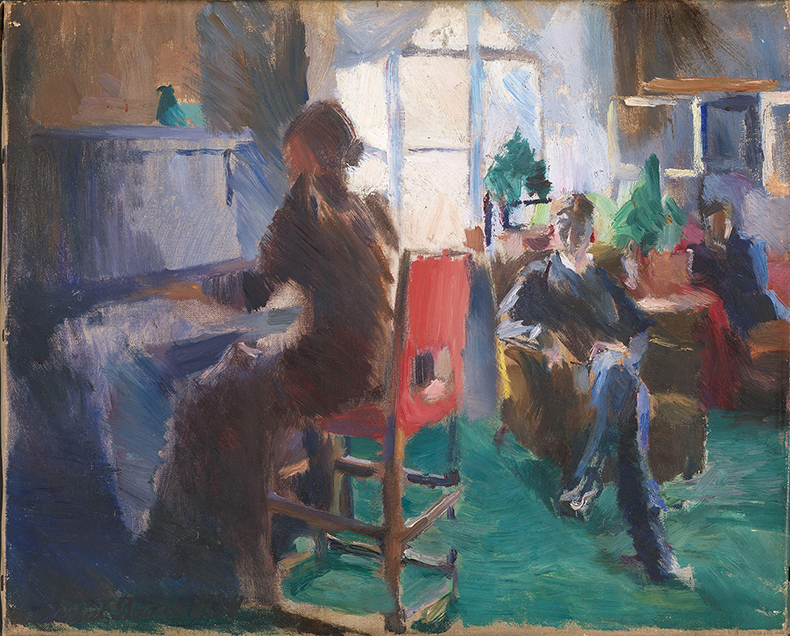
Present-day viewers may find uneasy the comparison between the bourgeois woman’s musical accomplishments and the peasant woman’s sewing that is suggested when these paintings hang together – but there is something fitting too, considering Backer’s own career. Art, for Backer, was work. She ran her own art school, but also held roles on exhibition juries (the first time a woman had done so in Norway) and sat on the Nasjonalmuseet’s acquisitions committee and board of directors between 1898 and 1918 (the only woman to do so during this period). Her artistic practice was also defined by labour. Paintings took months or years of painstaking work to complete – five years in the case of Interior from Uvdal Stave Church. Even then, completing a single painting did not conclude the process for Backer. She would continue to work out the same kind of questions in her repetitions – another kind of work.
My Studio (1918), Harriet Backer. Photo: Kode/Dag Fosse
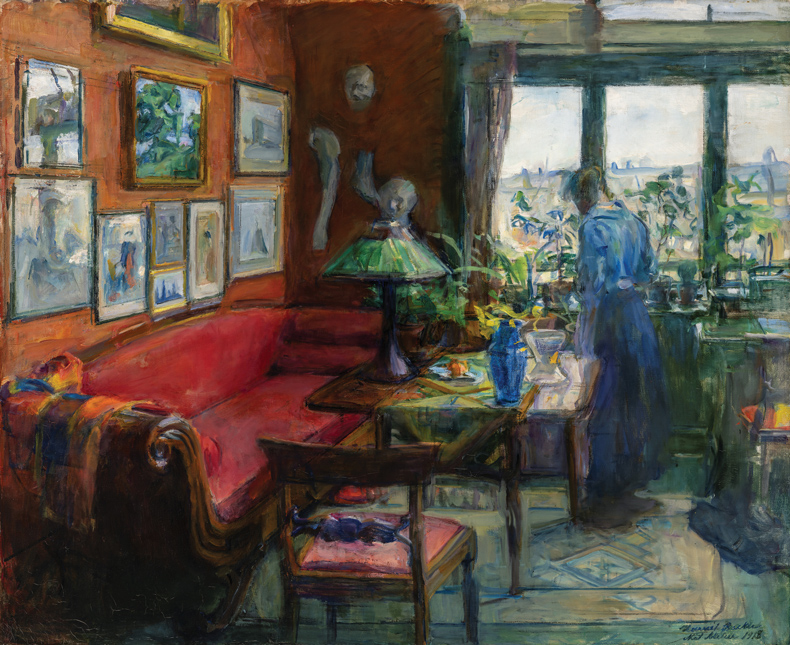
By making these processes visible, the exhibition suggests ways of appreciating Backer’s work that privilege subject and theme as well as style. In doing so, Hansen offers a method of understanding Backer that moves beyond the peculiarities of Norwegian life she captures with such care. Backer comes to embody the work of being a female artist at the turn of the 20th century – and in turn, to make clear the labour that art always demands. The exhibition ends with Still Life (‘the Infinite Painting’) (1918–31). Commissioned in 1918 by the Nasjonalmuseet’s director Jens Thiis, it remained incomplete upon Backer’s death in 1931. At its centre are a vase of flowers and a bowl of fruit, surrounded by the drips and whorls of Backer’s never-complete retouching and reworking. A good way to conclude an exhibition: the suggestion that art’s work is always endless work.
‘Harriet Backer: Every Atom is Colour’ is at the Nasjonalmuseet, Oslo, until 14 January.
From the January 2024 issue of Apollo. Preview and subscribe here.
